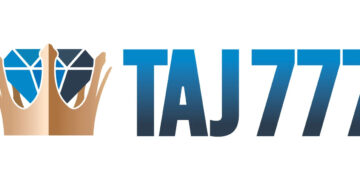The Philippines is blessed with abundant sunshine, making it an ideal location to use solar energy. Many Filipinos are now looking for cleaner, more affordable ways to power their lives and businesses. Understanding the Solar Panel Cost in the Philippines is the essential first step for anyone considering this important investment. This movement to solar power is fueled by a desire to lower high monthly electric bills and become more energy independent. Choosing solar is a wise, long-term decision that benefits both your finances and the environment.
What is Solar Energy?
Solar energy is the simple process of turning light from the sun into usable electricity. This conversion is done using special equipment called photovoltaic (PV) panels. These panels are typically installed in sunny spots, often on rooftops or in large open areas. Solar technology is clean, quiet, and operates without releasing harmful pollutants into the air. The reliable and intense sunlight across the islands makes solar a powerful and effective energy solution.
Why Should You Invest in Solar Energy?
The most attractive reason to switch to solar is the substantial savings on your electricity bills. Once your system is fully installed and paid for, the energy it produces is completely free. Solar power also provides a very stable energy source, which is especially critical during times of power interruptions or high demand. Furthermore, adding solar panels significantly increases the total market value of your property. It serves as a great defense against future increases in power rates from utility companies.
How is the System Cost Calculated?
The final price of a solar panel system includes much more than just the panels themselves. The total cost covers several critical components necessary for the system to function. These include the inverters, which convert the sun’s energy into household power, and the mounting structures, which secure the panels. It also accounts for the cost of electrical wiring, safety devices, and professional installation labor. The overall size of the system, measured in kilowatts (kW), is the primary driver of the total financial investment.
Residential Solar Panel Cost in the Philippines
Solar systems designed for residential use are generally smaller, focused on meeting a home’s specific energy needs. The Solar Panel Cost in the Philippines for homeowners depends directly on the system’s intended capacity. A very popular size for the average Filipino home is a 3-kilowatt (kW) system. This size can greatly reduce a significant portion of a home’s typical monthly electricity consumption. The good news is that prices for these residential setups have steadily fallen, making them much more accessible today.
A smaller setup, perhaps a 1-kW or 2-kW system, may cost a few hundred thousand Philippine Pesos. These smaller units are usually sufficient for essential needs, like lighting and small appliances. Larger homes with high power usage might require a bigger system, such as 5-kW or even 10-kW. The financial return for homeowners on this investment is typically very strong. The money saved on monthly bills often pays off the initial system cost within a short number of years.
Commercial Solar Panel Cost in the Philippines
Commercial solar installations are designed to be much larger and more complex than systems for homes. Businesses require massive amounts of power to run factories, large offices, and heavy machinery efficiently. Their systems can range widely in size, from many tens of kilowatts up to several megawatts of power. The Solar Panel Cost in the Philippines for commercial use benefits from what experts call economies of scale. This means the price per unit of power is often lower for these very large projects.
Several specific factors influence the commercial system’s final price, including the roof type, the building structure, and the business’s operating hours. A vast warehouse or factory roof offers an ideal, large area for placing numerous panels. The required upfront financial investment for a commercial system is always substantial. However, the subsequent energy savings can be enormous, directly boosting the company’s financial performance. Many smart businesses use solar power as a key strategy to manage long-term operating costs.
Key Differences Between Residential and Commercial Pricing
The largest difference in cost is a result of the project’s scale, complexity, and specialized requirements. Residential installations have simpler permitting processes and utilize standard, smaller components. Commercial projects demand detailed engineering, higher-capacity inverters, and stricter safety and regulatory checks. The significantly larger volume of materials and the greater complexity of the labor drive the wide difference in final pricing structures.
Financing methods also vary significantly between these two user groups. Homeowners typically rely on personal savings, standard bank loans, or financing secured by their home’s value. Businesses can access specialized financing tools like commercial loans or Power Purchase Agreements (PPAs). A PPA allows the company to simply buy the solar-generated power from a third-party system owner. This removes the necessity for the business to make a huge, immediate capital payment.
Maximizing Savings: Sizing Your Solar System
Choosing the correct system size is absolutely essential for achieving maximum savings and system efficiency. For homeowners, the process should begin with a careful review of at least a year’s worth of past electricity bills. For commercial operations, a comprehensive energy audit performed by experienced professionals is usually required. A qualified solar installer will use this data to recommend the optimal system size for your exact needs. Installing a system that is too large increases your initial cost unnecessarily. Installing one that is too small means you will not realize your full potential for energy savings.
Government Incentives and Supportive Regulations
The Philippine government has established regulations to encourage the widespread adoption of solar power. The Net Metering Program is the most relevant policy for system owners today. This program allows solar owners to export any excess electricity they produce back into the main utility grid. In exchange, the owner receives a credit on their future monthly electricity bills from the utility. This credit system significantly strengthens the financial case for investing in solar technology. These government frameworks help to reduce the time it takes to earn back the entire cost of the system.
Key Takeaway
Making the investment in solar power is a major financial decision for Filipinos across the country. Understanding the specific Solar Panel Cost in the Philippines is crucial whether you are a family or a commercial enterprise. Despite the high initial expense, the long-term energy savings and positive environmental impact are overwhelmingly compelling. The final costs for systems vary greatly due to the unique energy demands of residential versus commercial users. The most important steps are to conduct thorough research and select an experienced, reliable installer to ensure a successful solar power experience.

















